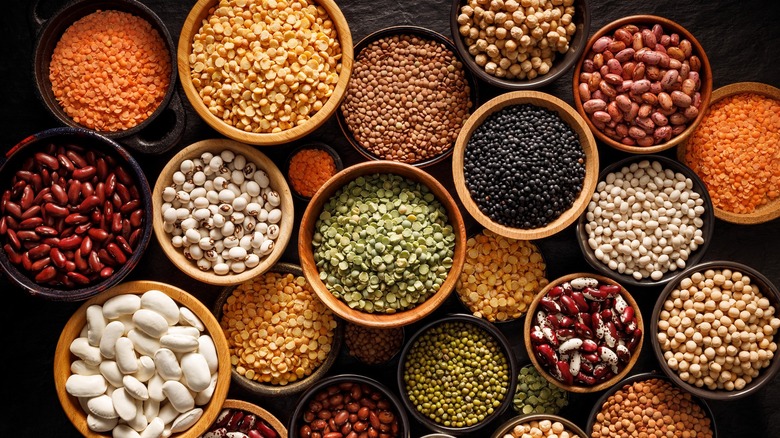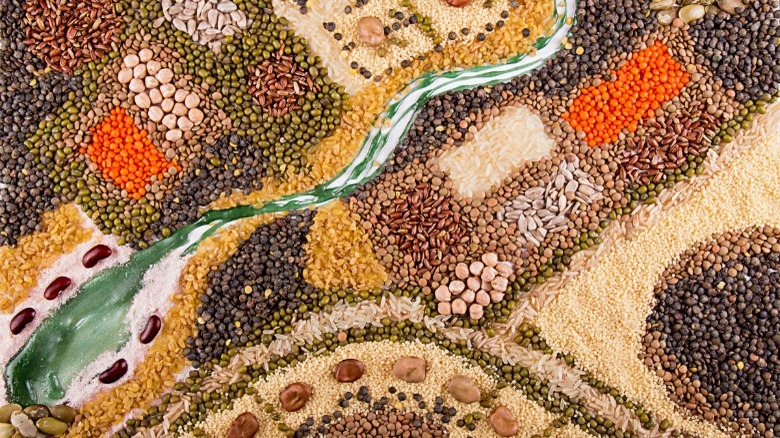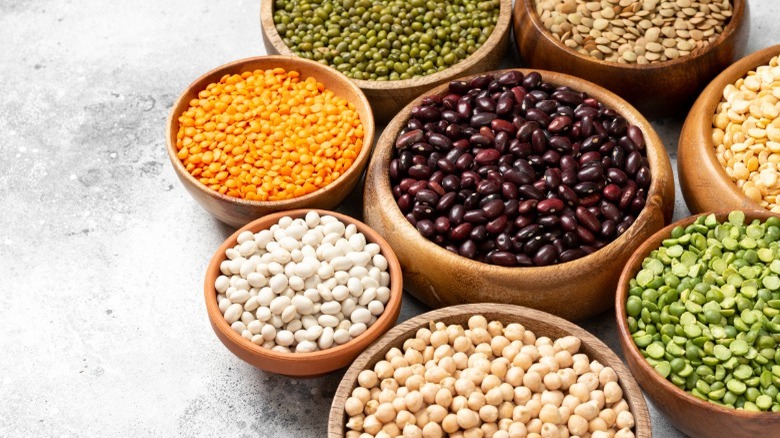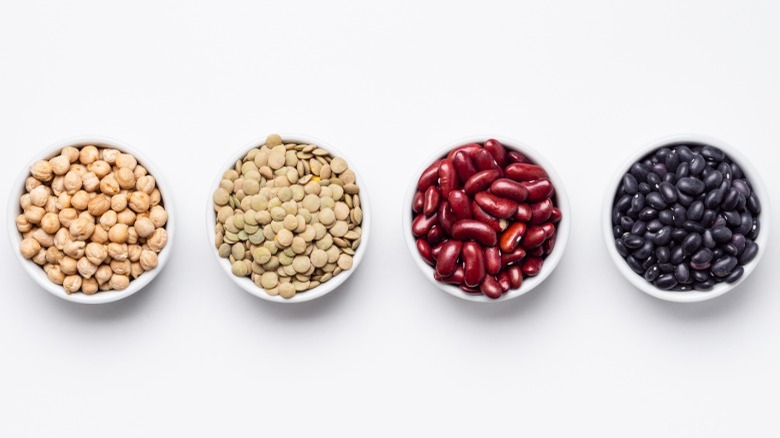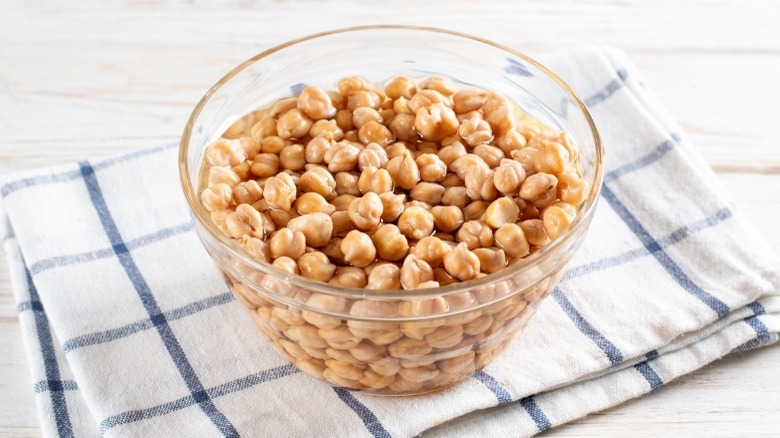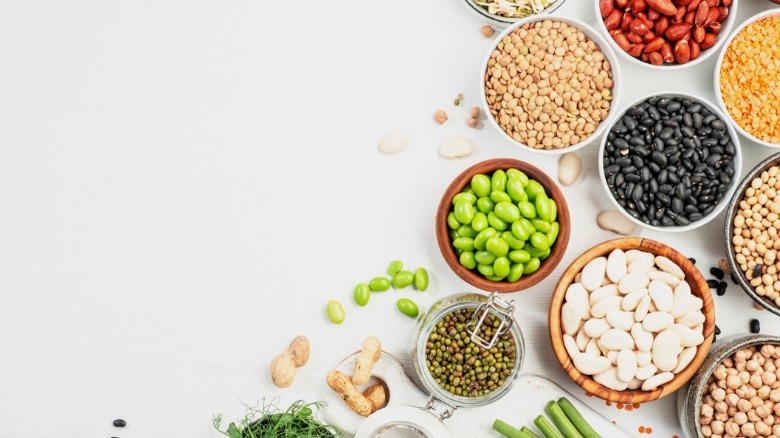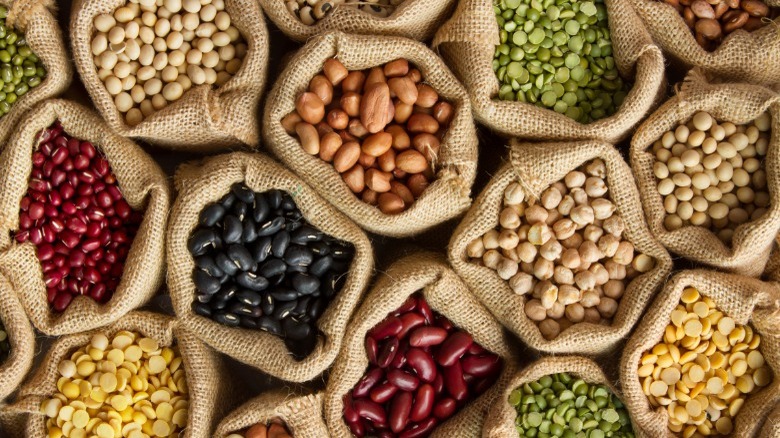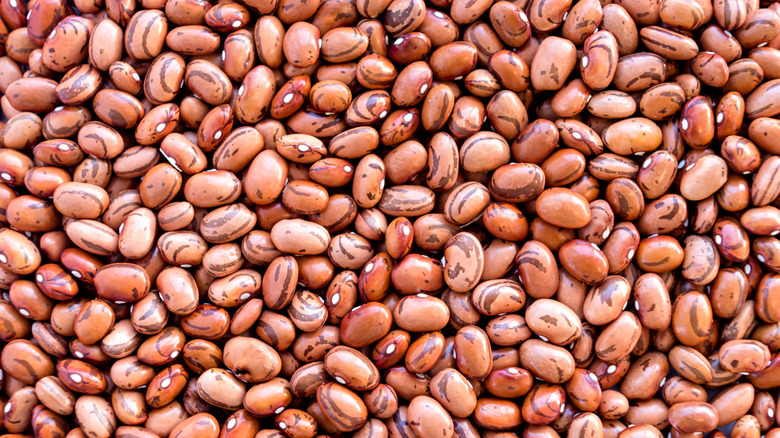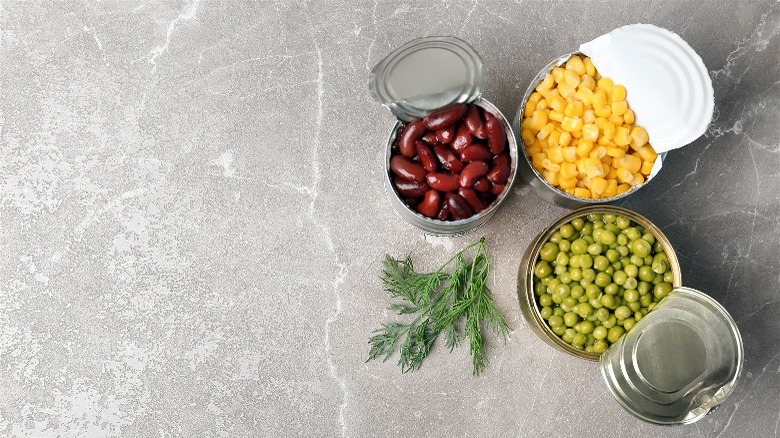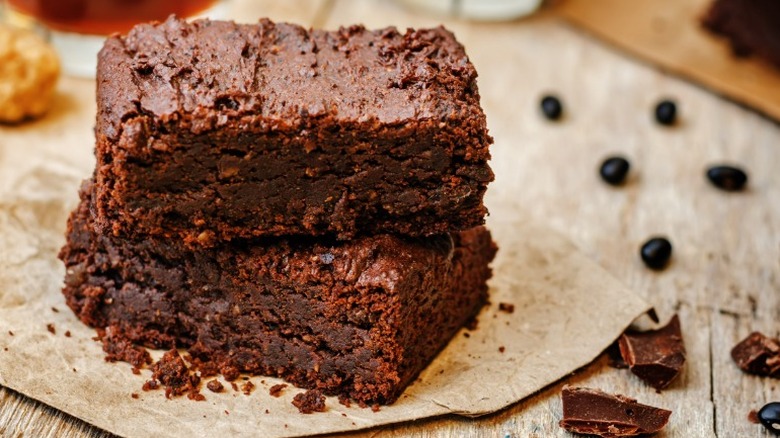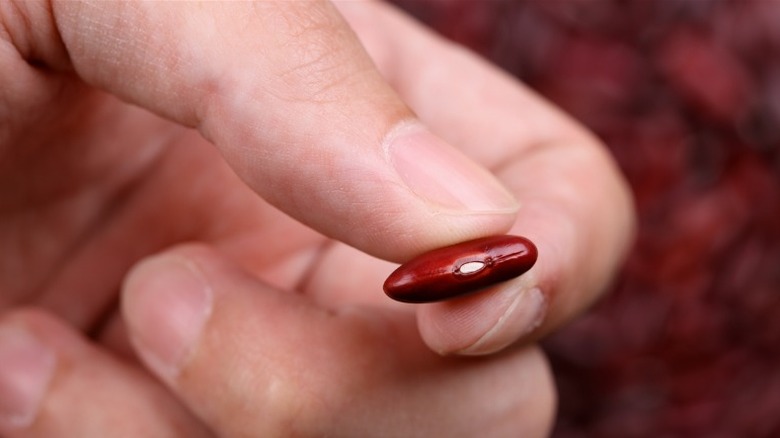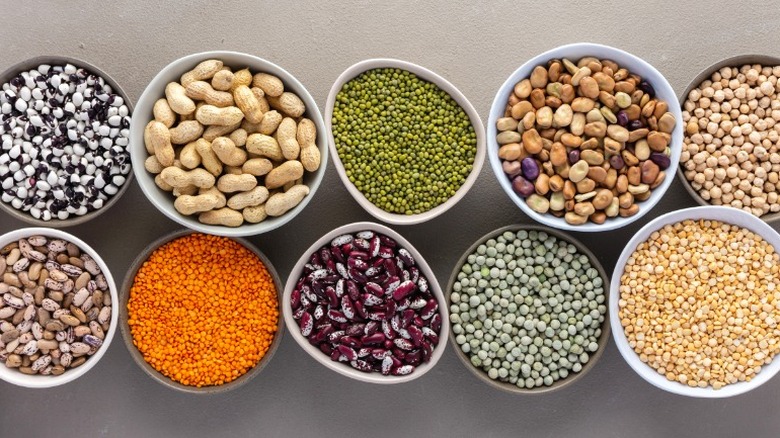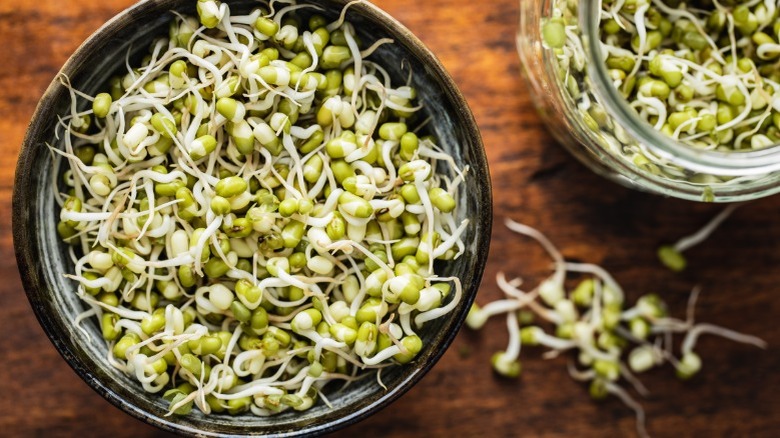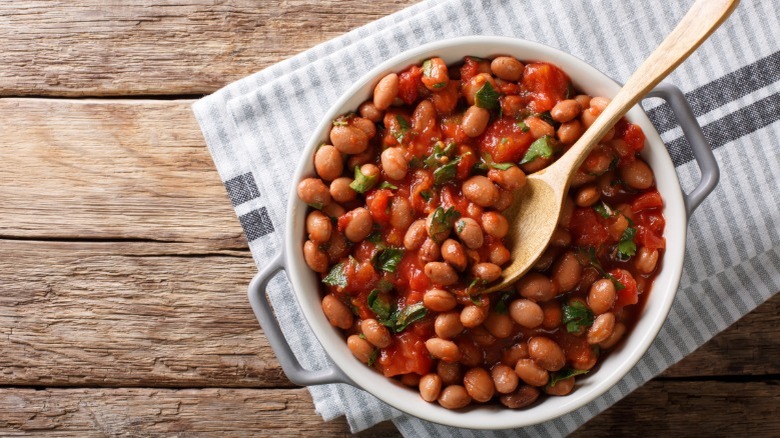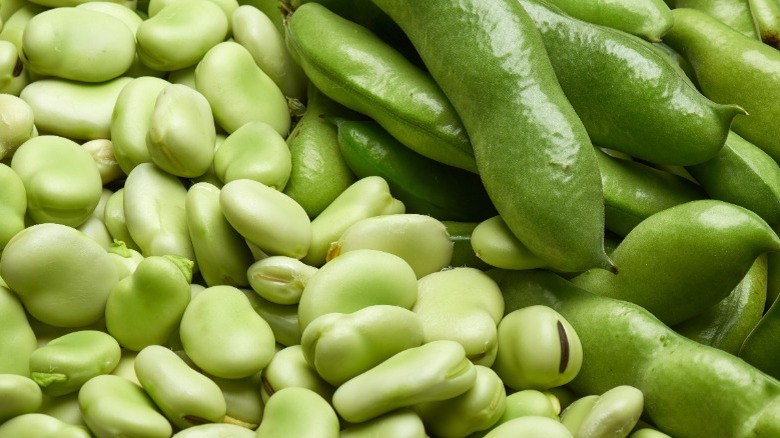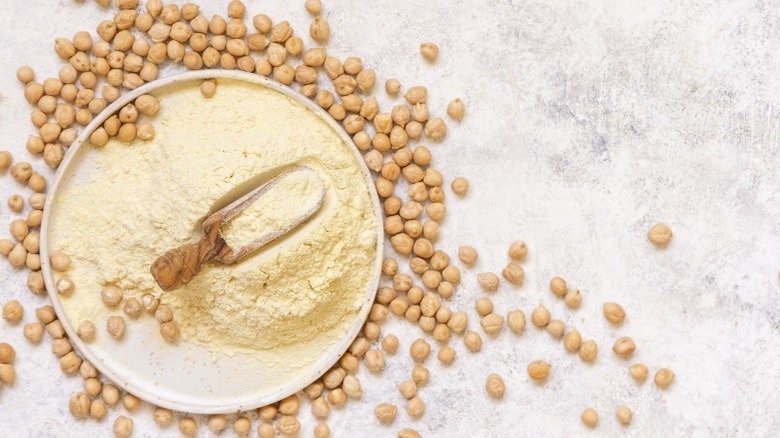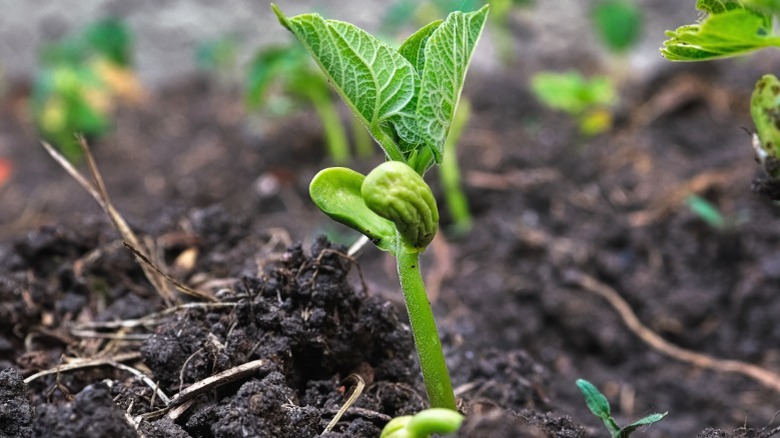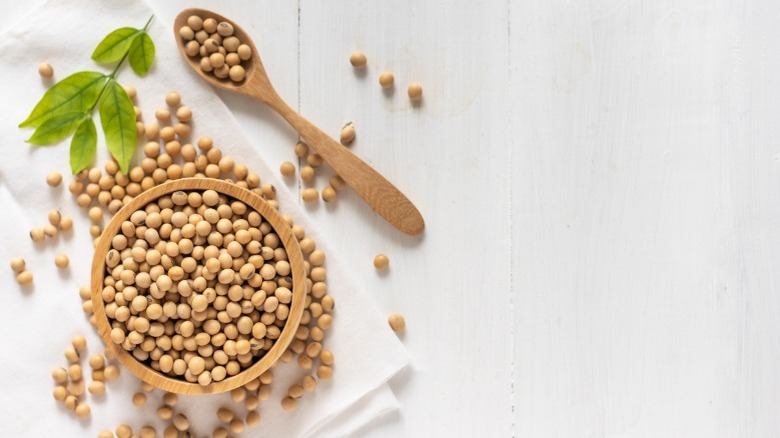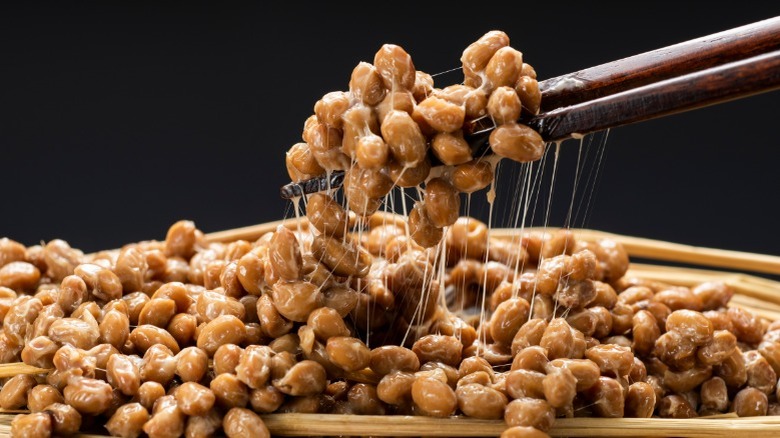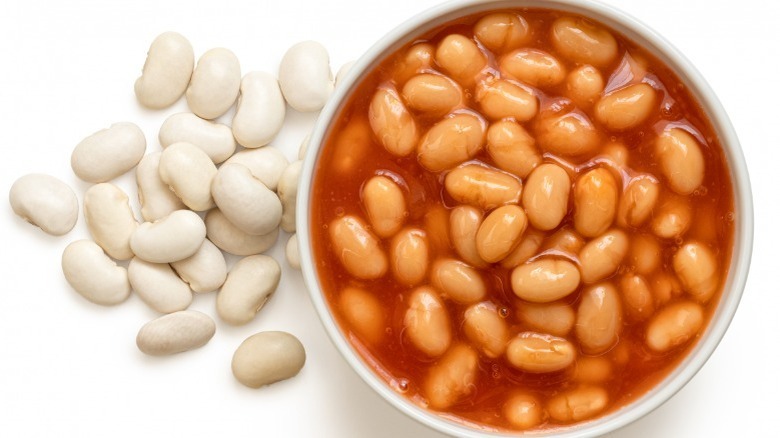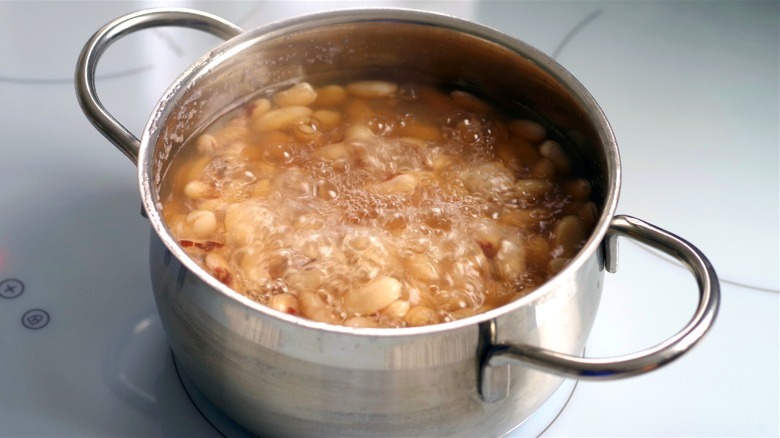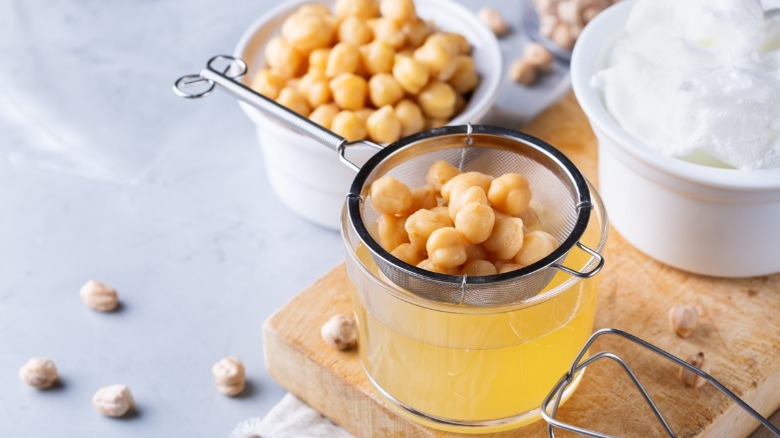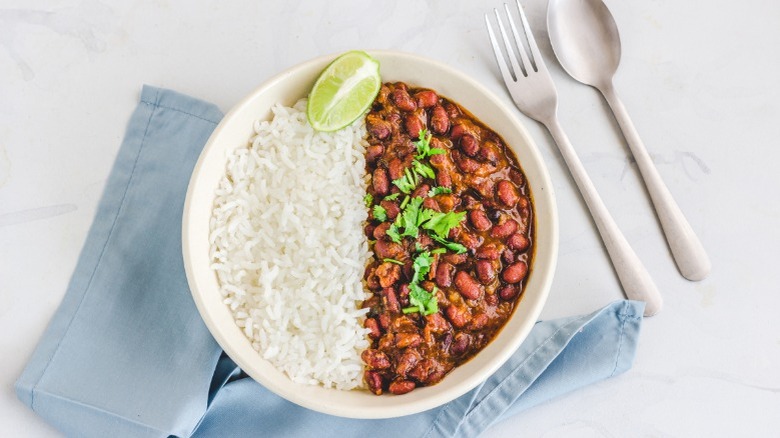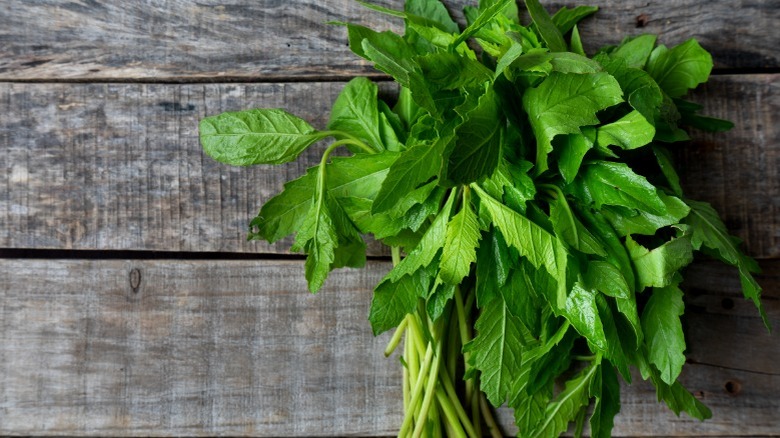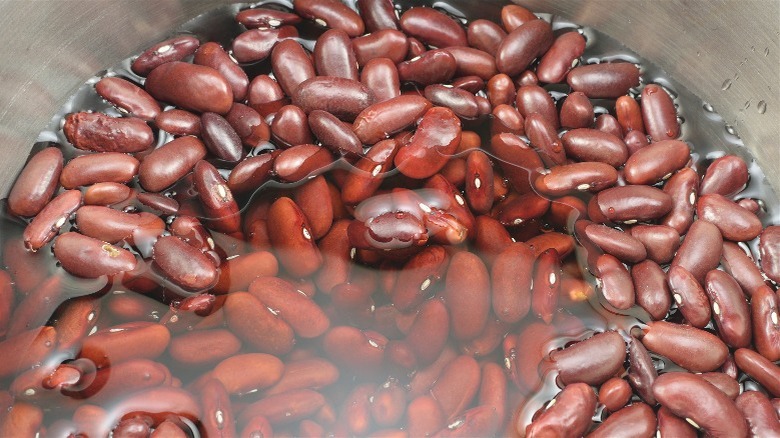Everything You Ever Wondered About Beans
Beans are a powerhouse of nutrition, and they've been a staple in diets around the world for thousands of years. These days it's hard to find a cuisine where these humble legumes wouldn't be involved. They are an incredibly versatile and nutritious food packed with protein, fiber, and essential vitamins and minerals, making them a great choice for those trying to eat healthier. Beans can be used in a variety of dishes, from soups to salads to stews and casseroles, offering endless possibilities regardless of diet.
Whether you're a beginner cook or a foodie with a passion for experimenting, this guide will help you understand everything you ever wanted to know about beans, from their history and etymology to their nutritional benefits. With our handy cooking tips, you'll learn everything you need to get the most out of your next bean dish. So, if you're ready to uncover the secrets of beans, let's get started.
Beans go way back
If you ever browsed through a list of staple ingredients online, you might have noticed that beans always make the cut. In fact, they've been making it for at least 10,000 years. Beans were a dietary staple in ancient Egypt and Greece and were likely consumed even before they were first domesticated. Romans valued legumes so much that they named themselves after the four most prominent varieties: Fabius was named after fava beans, Lentulus owes his name to lentils, Piso came from pea, and Cicero from the chickpea (via "On Food and Cooking").
There is a difference between beans, pulses, and legumes
The words beans, pulses, and legumes are often used as synonyms, yet there is a curious distinction. As the Harvard School of Public Health explains, legume refers to any plant in the Fabaceae family, complete with all its edible parts — leaves, pods, roots, and seeds. Pulses, on the other hand, are a subset of legumes, and the term is only used for edible seeds of legume plants. Thus, dried beans, peas, and lentils are all pulses, whereas fresh seeds and pods, like green peas and edamame, are legumes.
About 40,000 bean varieties exist, but only a few are popular
Considering beans have been domesticated for thousands of years and have spread around to become a staple in almost every cuisine, it comes as no surprise that there are at least 40,000 varieties of beans stored in genebanks worldwide (via USDA). However, only a small number of cultivars is mass produced. But that doesn't stop the most popular types of beans from being some of the most widely consumed foods in the world. Together with grains, they make up more than two-thirds of the global dietary protein consumption, per "On Food and Cooking."
There is a reason you need to soak dry beans – but you can skip it
If the thought of soaking dried beans before cooking has stopped you from incorporating more of them into your diet, we have good news. The unsoaked beans might take longer to cook, but not by much — only 10 minutes or so. This mainly applies to fresh beans, so don't skip the soak for that old bag of beans in your pantry.
Another reason to soak your beans is lectins — the proteins our gut cannot digest without outside help. Since they're water-soluble, soaking helps remove them (via Harvard School of Public Health). But so does prolonged exposure to high heat during cooking, which is why you shouldn't cook raw beans in a slow cooker. Instead, opt for stovetop methods.
Beans are a concentrated source of nourishment
Beans are an inimitable nutritional powerhouse due to their high levels of protein, fiber, folate, iron, potassium, and magnesium. They are also a good source of B vitamins, iron, zinc, copper, and calcium (via Healthline). Additionally, beans are low in fat, sodium, and cholesterol, making them an ideal choice for those looking for nutritious, high-protein, low-calorie food. Furthermore, beans are rich in phytonutrients, which have been linked to various health benefits, such as reducing the risk of stroke, depression, and colon cancer (via WebMD). And while they have all the trappings of a superfood, beans remain an affordable source of nutrients.
They can be stored indefinitely
In addition to their low price, what makes beans a ubiquitous pantry staple is their longevity. Dried beans can be stored indefinitely if kept in a cool, dry place with little access to oxygen, and proper storage can extend the shelf life of dried beans up to 25-30 years. Unfortunately, loss of vitamins is inevitable during long-term storage, with the degradation starting a couple of years in and almost no vitamins left by year five, per Utah State University. But with so many quick and delicious bean recipes out there, we doubt you'll let them sit in your pantry for so long!
Beans are the healthiest – and most affordable – source of protein
Beans are the oldest and most reliable source of plant-based protein, with each serving containing six to nine grams (via VegNews). Considering they are generally cheaper than animal proteins, beans make a great budget-friendly option. However, since most varieties lack all the necessary amino acids, it is recommended to pair them with a complementary protein source, such as grains. Soybeans, on the other hand, are the exception. They contain all nine essential amino acids, making them the only complete source of protein in the legume family, per Piedmont.
It's safe to eat beans straight from the can
Canned beans are one of the basic ingredients you should always have on hand for a good reason — they're inexpensive, convenient, and have a long shelf life. While dried beans need hours of soaking and cooking to become safe to eat, their canned counterparts are always ready to go since they're already cooked. But is it safe to eat canned beans without heating them up? The short answer is yes. Just make sure to drain and rinse them to remove the high-sodium liquid they come in, and enjoy in your favorite recipe.
You can use beans in sweet dishes
When we say beans are a versatile ingredient, we mean it. Adding beans to the batter is one way to ensure your baked treats will never be the same. They can substitute both fat and flour in brownies and cookies. In fact, one of the absolute best ways to use a can of black beans is to turn them into a fudgy protein-rich brownie that's also gluten-free. While black beans are an excellent flavor match for chocolate, chickpeas and white beans are best used in other recipes, like blondies, vanilla cake, or even dessert hummus.
There's an easy way to tell when beans are ready
Most dried beans take their time in the pot, and it can certainly be frustrating when you've been cooking them for hours, only for them to remain too hard or too mushy. Fortunately, there is an easy way to tell when beans are done. You can avoid over or undercooking them with a simple mashing technique. Use your fingers, tongue, or a fork to squish a cooked bean. It should mash easily, and if there's any resistance or tough bits, you might need to cook them a little longer.
Peanuts belong to the same family as beans
This might come as no surprise to a knowledgeable foodie, but a lot of people don't realize that peanuts aren't actually nuts. They might have "nut" in the name and be similar in taste and nutritional profile to tree nuts such as walnuts and almonds, but peanuts are actually legumes. Unlike most pulses, however, they grow underground, which is why they are sometimes called ground nuts. Their legume origin might explain why they beat all other nuts when it comes to protein content, with a whopping 9.5 grams per serving (via Healthline).
Bean sprouts add more than a crunch to your diet
Another way to incorporate more legumes into your diet is using bean sprouts. With 7 grams of protein and 22% of the recommended daily norm of vitamin C per cup, they make a healthy and refreshing addition to any dish (via WebMD). But eating bean sprouts can be risky, too — the conditions in which they grow put them at a high risk of contamination, so it's best not to eat store-bought sprouts raw. Keep them fresh by submerging them in ice water and storing in the fridge, and try to consume them within a couple of days after buying.
There is a way to silence the music
From a nutritional and culinary standpoint, beans are perfect in almost every way. But when it comes to digestion, they have a bad rep. Their notorious musical properties are caused by the inability of our gut to power through their oligosaccharides. Those indigestible fibers go straight down to our intestines and ferment there. While that's actually good for gut health, the flatulence caused by it can certainly be a turnoff (via Healthline).
Fortunately, you can minimize the discomfort. When you incorporate beans into your diet, go slowly and drink plenty of water as you do. Change the soaking water a few times to get rid of the gas-inducing fibers. Finally, cook them well and take digestive enzyme pills, if necessary.
The father of vegetarianism had an odd fear of beans
You might know Pythagoras as a theorem-spitting mathematician and philosopher, but he was also one of the world's first notable vegetarians with a cult following. While modern plant-based eaters always say beans when asked where they get their protein, Pythagoras believed in their somber symbolism and stayed away. He likened then-ubiquitous fava beans to human fetuses in shape and flesh in texture and believed consuming them was akin to cannibalism (via Atlas Obscura).
It is rumored that Pythagoras' principal stance on allegedly soul-bearing legumes led him to his death, as he was unable to make himself cross a fava field while trying to escape his attackers (via IFL Science). Fortunately, our understanding of beans is more scientific these days, and they make a completely safe source of vegan protein.
Legume flours are a versatile ingredient
Did you know that beans can be ground into flour? The most common varieties are made from chickpeas, soy, mung beans, and black gram pulses. Legume flours can be used in a variety of recipes, including bread, cake, pasta, and pastries. They are also a good source of protein and can be used to replace wheat flour in gluten-free recipes. Additionally, legume flour can be used as an egg substitute. They can also be mixed with grain flours to create a more nutritious flour blend, according to a 2015 study. Overall, legume flours are a healthy and versatile ingredient that can be used in a variety of dishes.
Beans are exceptionally good for the environment
Legumes are a unique food, as they are not only good for you, but they're also good for the planet. According to FAO, pulses are "climate-smart," meaning they can be hand-picked and tailored to the latest environmental shifts while simultaneously combatting the effects of climate change. Their symbiotic relationship with nitrogen-producing bacteria in the soil improves its fertility.
Compared to other animal protein sources, legumes are much more sustainable in terms of water usage. Producing four ounces of common beans requires only 49 gallons of water. In comparison, the same serving of chicken requires 130 gallons, and beef an astounding 463 gallons (via Water Foodprint Calculator). Needless to say, beans are the future of protein in the era of climate change and food insecurity.
Soybeans get an unfairly bad rep
No other legume is surrounded by so much controversy as the soybean. It's accused of causing infertility, breast cancer, feminizing men, and endangering children. However, these myths force people to overlook the health benefits of soy. For one, it contains all essential amino acids, making it a rare source of complete protein among plant foods (via American Family Physician). Additionally, soybeans contain vitamins and minerals, such as folate, vitamin K1, phosphorus, and manganese (via Healthline).
What's more, soybeans and foods made from them are villainized as a cause of deforestation, when in fact, only 7% of global soy production is meant directly for humans compared to a whopping 77% for livestock feed. And if you're concerned about the GMO factor, FDA reports that most GMO soy in the U.S. is fed to farm animals, so you might want to opt for organic soy or other legumes for protein instead of meat.
Fermentation makes them even more nutritious
When our digestive system encounters the complex sugars found in beans, it jump-starts a fermentation process that's beneficial for our gut yet creates discomfort. In this case, a way to fight fire with fire is to consume tempeh or any number of fermented soybean products found in different cuisines. Natto, in particular, is revered for its nutritional benefits, containing 134% of the recommended daily amount of manganese, 84% of iron, and 38% of vitamin C in a single serving (via Verywell Fit). But it doesn't have to be soybeans — any cooked bean can be fermented by simply adding a culture such as kombucha or a lacto-fermented vegetable brine (via Cultures for Health). This will increase their digestibility and help promote the growth of gut-healthy bacteria.
You can substitute dried beans for canned
Generally speaking, you're better off buying dried beans instead of canned — they cost less, have a longer shelf life, and are lower in sodium. Additionally, you have better control over the texture and flavor of dried beans. But you've ever wondered whether you can swap dried and canned beans in a pinch; the short answer is yes — but there's a catch. Before making any changes, consider the difference in measurements: One pound of dried beans is equivalent to about three cans, drained and rinsed. Additionally, since canned beans are ready-to-eat, it makes sense to add them toward the end of cooking, although they might not take on the flavors as well as dried beans would.
It's possible to speed up bean cooking with one pantry staple
One of the main things preventing more people from cooking with dried beans is their extensive cooking time. Fortunately, there are simple pantry-friendly solutions to this problem. First, you could create an alkaline environment by adding a quarter teaspoon of baking soda to both soaking and cooking water. This will help break down the pectin molecules and speed up cooking, especially for old beans.
Speaking of pantry staples that affect beans, you need to stop believing the salt myth — salted water actually does a better job penetrating the tough outer skins, resulting in soft and creamy beans. The Bean Institute stands by that method, recommending brining the beans in salted water before cooking.
Liquid from canned beans is worth saving
While draining and rinsing canned beans is essential, you should never get rid of the liquid they come in, as it has various culinary uses. Its starchy, salty properties make it a good base for thick savory sauces and a good addition to soups and stews. Just make sure you're using low-sodium beans; otherwise, cut the salt in the recipe.
In the realm of canned bean liquids, leftover chickpea water is known as aquafaba. Revered for its egg-mimicking quality, it's become a staple of plant-based cooking. Aquafaba is the reason we have vegan meringue, but it can also be used in other sweet and savory recipes calling for eggs.
Beans and rice work so well together for a reason
Whatever your favorite cuisine might be, we bet there is some sort of rice and bean dish that can be found there. There are Indian rajma, Ghanaian waakye, Valencian paella, Korean kongbap, and countless other exciting dishes around the world that definitely fit the description of rice and beans. How did this happen? Maybe our ancestors intuitively knew the combination of rice and beans together would contain all essential amino acids. Maybe they were making the most out of affordable, lasting staples. Maybe not, but in any case, you can take advantage of this miracle pairing by trying an instant pot vegan red beans and rice recipe.
Herbs can elevate the flavor and aid digestion of beans
One way to feed two birds with one hand while cooking beans is to add special herbs during cooking. They will not only improve digestibility but also add flavor. Asafoetida, which usually comes in powdered form, is commonly used in Indian cuisine, both as a substitute for garlic powder and a flatulence-reducing component. Epazote, an ancient plant native to South and Central America, is another herb you should be adding to beans because of its potential to counter stomach cramps while adding an earthy undertone. Finally, green beans can be elevated by a German herb called bohnenkraut, which literally means "bean weed" and translates to "savory." All of these have a strong, distinct flavor, so it's best to use them sparingly, especially for the first time.
You shouldn't cook beans in their soaking water
As environmentally friendly as the desire to cook beans in the water they were soaked in can be, it's actually a bad idea. When we soak beans, our goal is to make them more digestible, and it works because the water absorbs some of the indigestible compounds that ultimately cause flatulence. Thus, not changing the water before cooking means that this beneficial effect of soaking will be overruled, and more oligosaccharides will end up fermenting in your gut. To avoid that, change the water several times during soaking and once more before cooking.
